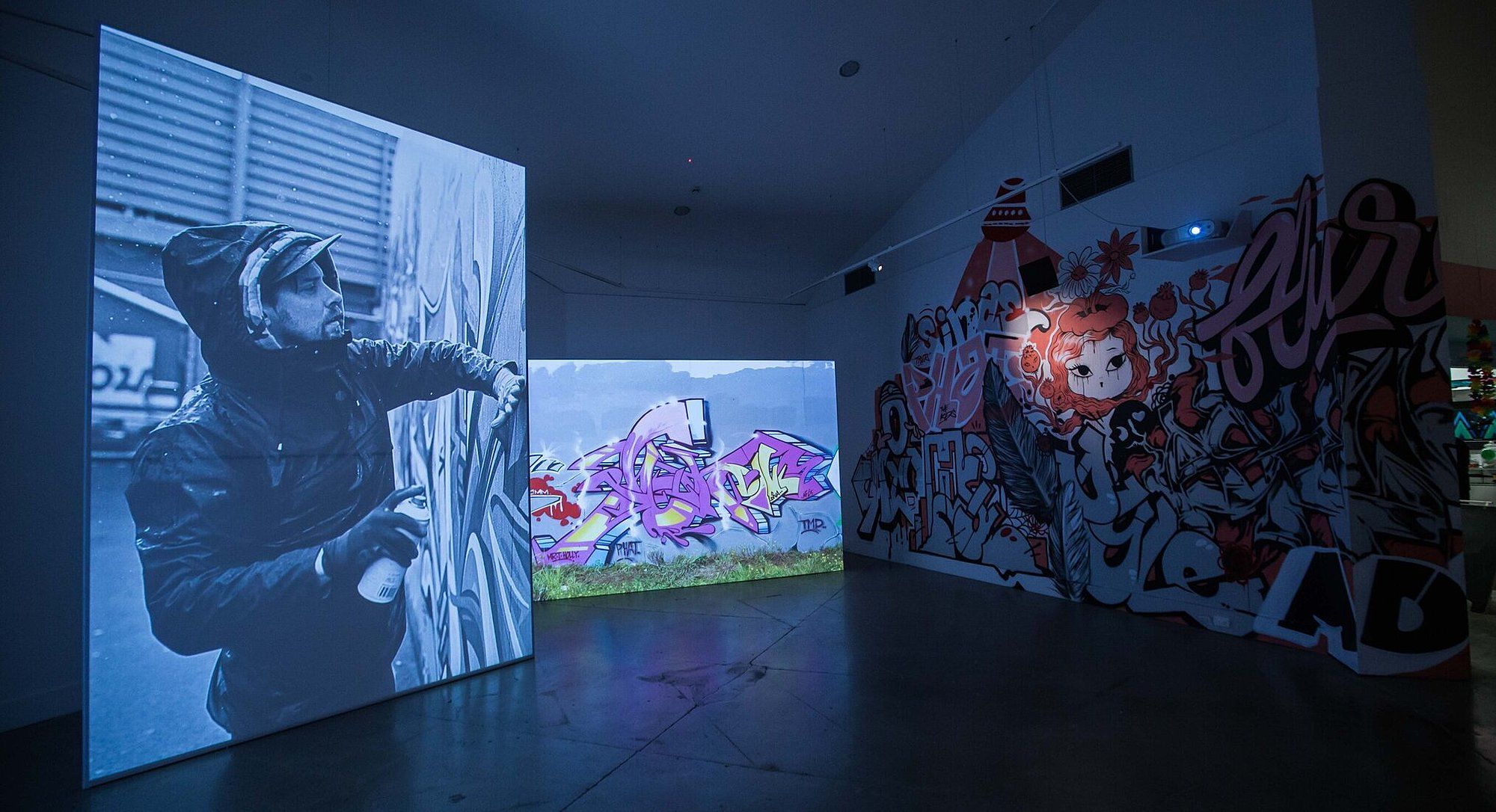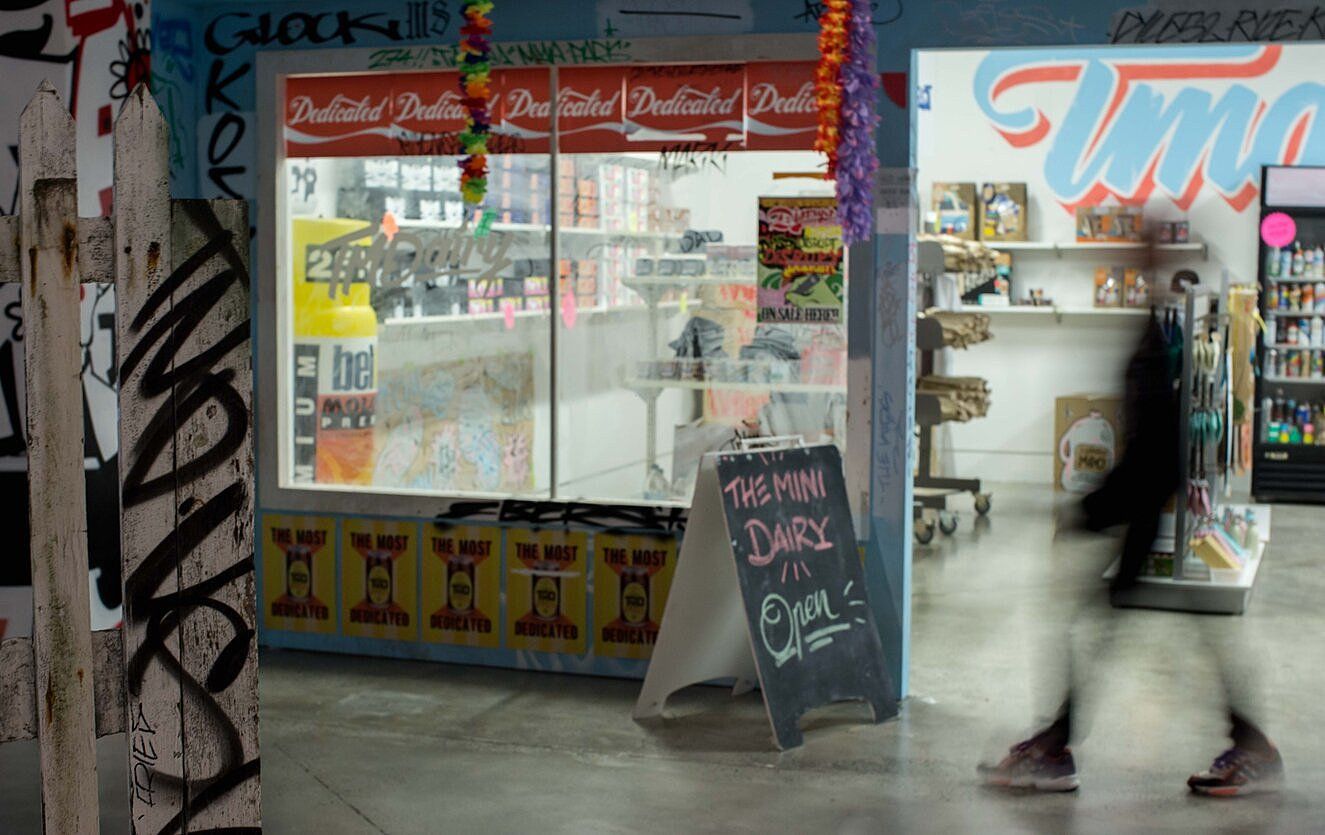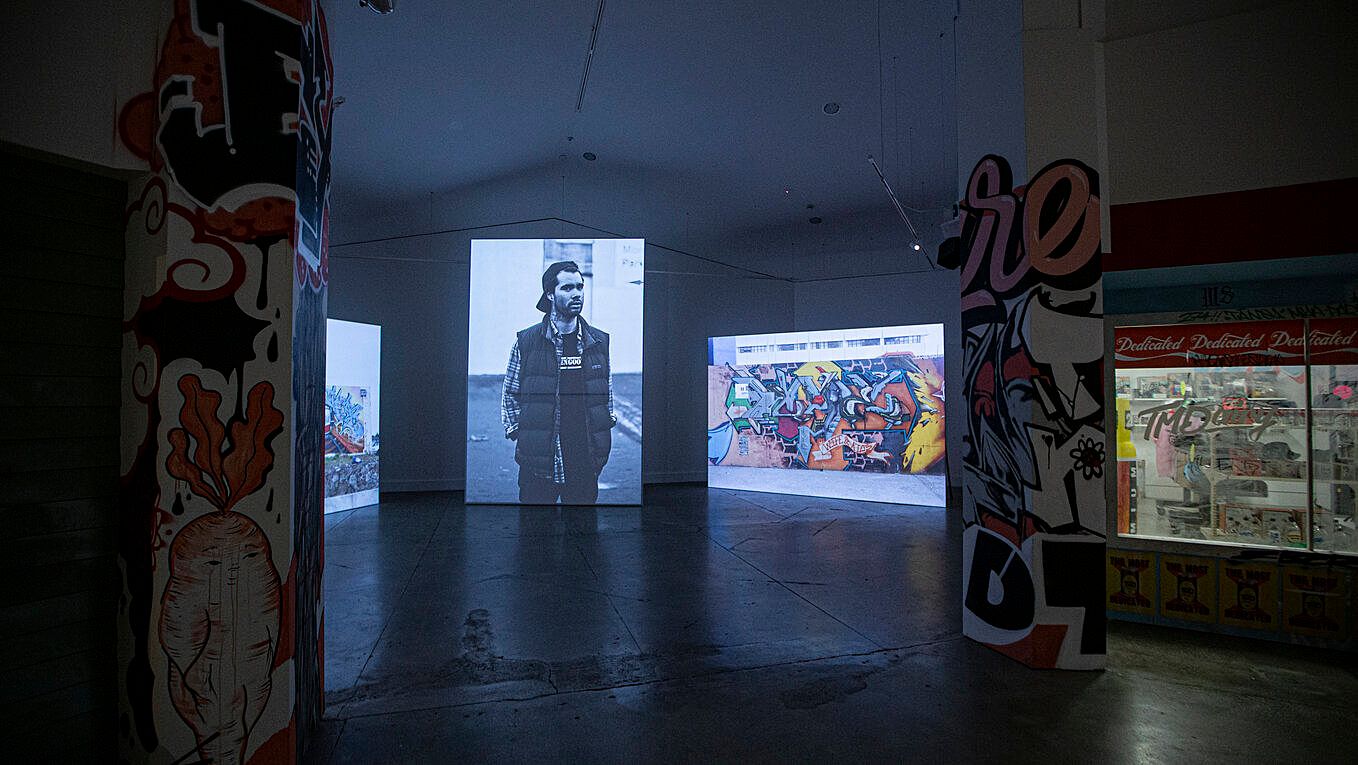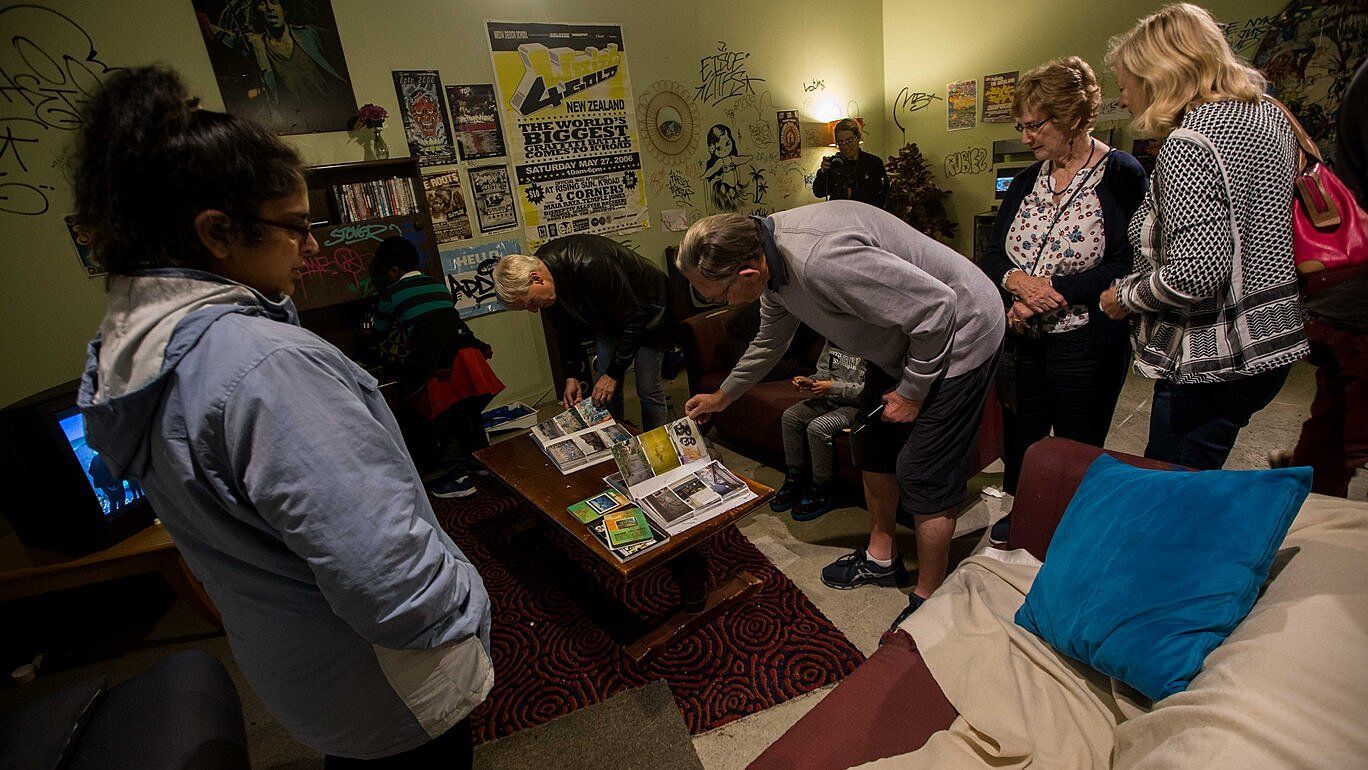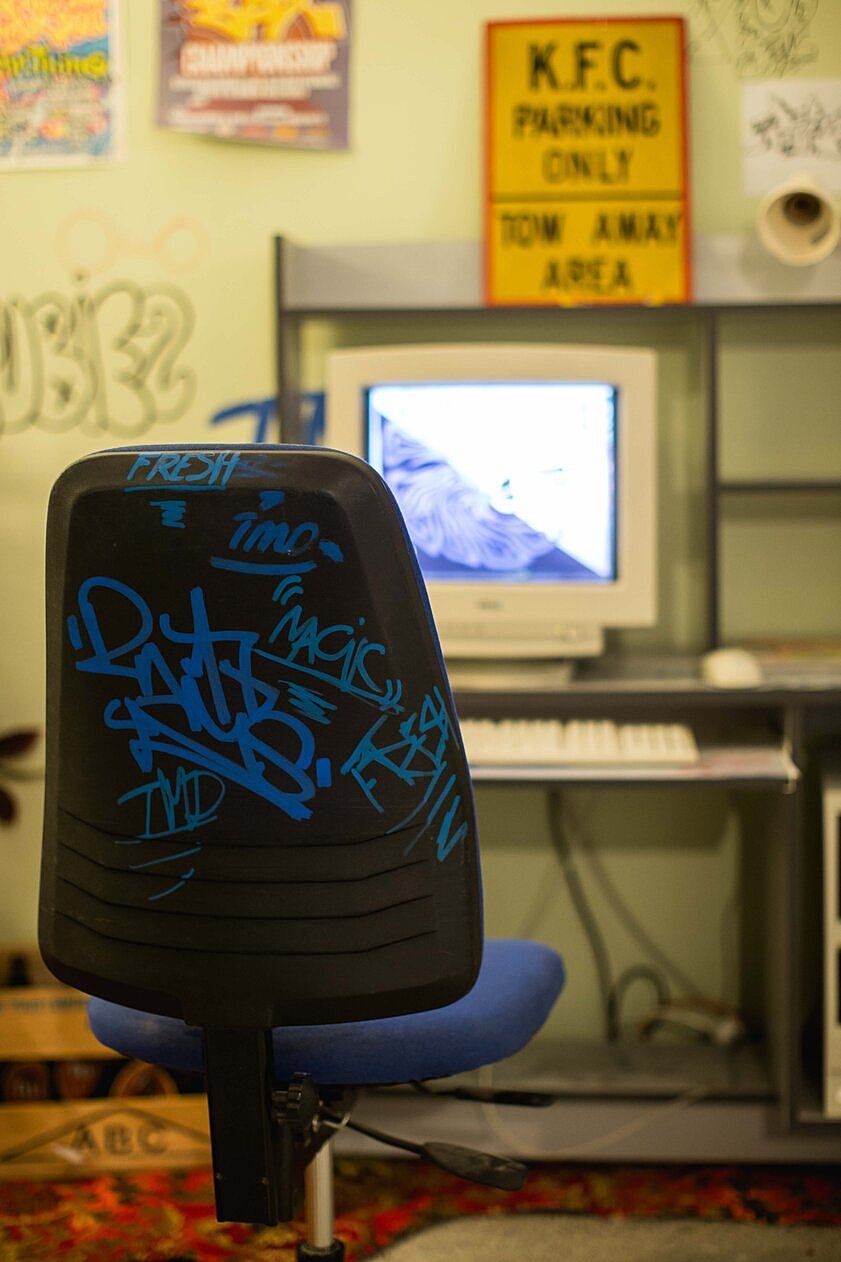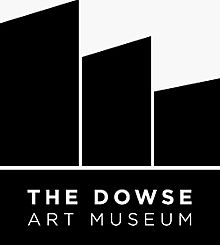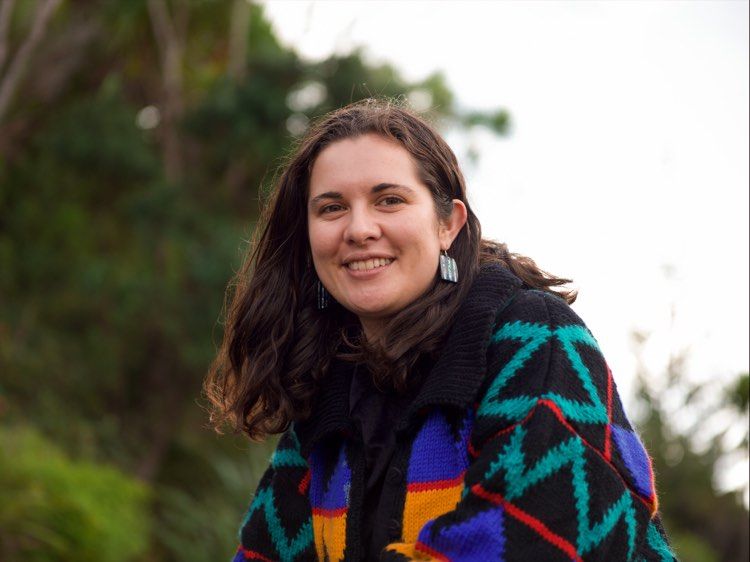Dedicated Disruptions
On the exhibition reprogramming the way we encounter and value contemporary art. Sinead Overbye reviews The Most Dedicated: An Aotearoa Graffiti Story.
The Most Dedicated: An Aotearoa Graffiti Story is an exhibition currently at The Dowse Art Museum that follows the story of street-art collective TMD (The Most Dedicated), who are internationally renowned for their work. The exhibition features work from over 20 of TMD’s members, both local and international. The result is a large-scale showcase of street art and graffiti that transforms the gallery space into something new.
The TMD crew originated in Auckland. According to their website, the crew was born out of a council-funded art project in the mid 1990s, in which a group of young taggers was mentored to paint two large-scale walls along the West Auckland rail corridor. This project sought to inspire youth towards careers within the commercial art sector and deter them from creating illegal work. The project, however, brought this group of young taggers together and inspired them to “paint harder than any generation before”. The result was a consolidation of Auckland’s various street art groups into one entity – TMD crew.
TMD subsequently grew into a movement of young graffiti artists who collectively transformed the city with their street art. Many of the original artists are still creating today. Although many of them have moved towards different media such as sculpture, fine art, large-scale mural work, photography, graphic design, illustration and video production, graffiti still lies at the heart of their artistic lives.
I walk past other exhibitions at The Dowse that feel standard and familiar – canvasses hung against plain white walls. I have high expectations that this exhibition will be different. The exhibition description tells me that The Most Dedicated: An Aotearoa Graffiti Story will be an ‘immersive experience’, and I’m curious to find out what that means. When I arrive at the TMD exhibition space, I hear hip-hop music playing from the gallery, like it’s blasting straight from the 90s. It’s already disrupting the space. I start to get the feeling that this will be different from any other exhibition I’ve seen.
The Most Dedicated: An Aotearoa Graffiti Story installation view, 2021, The Dowse Art Museum. Image: Antonio Hernandez
Stepping into the TMD space, I find the gallery has been transformed into a street scene – there’s a picket fence running through the middle of the space, a rusty old bicycle in the corner, and a weather-boarded wall that looks like the outside of someone’s house. To my left is a wall that’s been made to look like the outside of a train, covered in spray-paint. The colours are bright, bold and vivid. I’ve stepped into another world – TMD’s world.
The Most Dedicated: An Aotearoa Graffiti Story installation view, 2021, The Dowse Art Museum. Image: Antonio Hernandez
To my right is a wall that’s been transformed into the outside of a dairy. There are newspaper headings framed outside saying ‘TMD CREW FROM TAGS TO RICHES’, and Coca-Cola signs rebranded as ‘Dedicated’. There are even Bubble O’Bill posters, renamed Trouble O’Bill. I feel like I’ve been plunged straight back into my childhood, walking home from school in Gizzy, Hubba Bubba gum being doled out by my cousin as we stand outside the local dairy, hopping from one foot to the other on the hot concrete. This setting is quintessentially an Aotearoa one, but one also of a specific mid-to-late 90s, early 2000s time period. You don’t find dairies like this anywhere else in the world.
As I walk into the dairy, I expect it to be a gallery site to display some art – perhaps there’ll be some paintings, a few framed photographs. Instead, the TMD dairy is a fully functioning merchandise store. There’s a guy at the counter who greets me, and merch on the shelves for people to purchase. I’m in this strangely uncomfortable zone of – Wait, I can touch this?! – because it seems like a contradiction within the gallery space. Galleries are usually all about appreciation from afar – giving that ‘a-ha, I get it’ nod to yourself as you walk from artwork to artwork, secretly reading the wall descriptions as you pass by, because you really don’t know what it means, but you don’t wanna look like an idiot.
The Mini Dairy, 2021, installation view, The Dowse Art Museum. Image: Antonio Hernandez
TMD’s exhibition isn’t like that. All elements on show have been created by the crew. It’s a relief to see an exhibition that feels strongly artist-driven. Here, the artists really get to have their vision and execute it as they want. This exhibition makes you feel involved, caters to your curiosity, and lets you enter the world where TMD was born, where they lived and worked during their formative years.
I reach out and rifle through their t-shirts, tossing up between different colours, thinking, these are pretty skux. The guy at the counter is just chilling. He’s not a silent gallery assistant watching you like a hawk in case you get your grubby prints on a piece of art. Because it’s all good here. We’re undoing all those rules. I feel everything I’ve learned about how I should act in the gallery space is unravelling. It makes me feel more comfortable, and strangely relaxed. I realise I’ve hardly ever felt like this in a gallery – I’m always slightly on edge, policing my own movements. It takes a while to let go that way of being.
The Most Dedicated: An Aotearoa Graffiti Story installation view, 2021, The Dowse Art Museum. Image: Antonio Hernandez
All the things seen in this exhibition are artworks. Down to the smallest scrawl of graffiti on the side of a rubbish bin, everything has been purposefully contributed by a member of TMD. There’s a story behind it all, just as there’s a story behind each piece of street art we see on our commutes into work each day. For those of us who might take the things we see each day for granted, this exhibition helps to reframe our view on the world, to consider the origins of every piece of art we see on the street, and how it got there.
There is still a stigma against graffiti today. As I walk around the gallery this is on my mind because, to me, galleries feel like spaces dominated by wealth – the type of spaces rich white aunties visit on the weekends. A part of me wonders – how confronting might this exhibition be for those who don’t think of graffiti as capital-A Art? It interests me that sometimes things can be presented in a gallery environment, and we never quite know if they truly transform the way people see the world when they leave. Part of me hopes that this exhibition will. It’s certainly striking enough to make an impact.
Outside the dairy, there are three large-scale projections showing various pieces of street art, and photos of the artists with their spray cans. They paint on the sides of abandoned buildings, on concrete walls, beside train tracks, anywhere and everywhere. They’re the people behind the scribbles and paintings we see all the time, and hardly pay attention to. They transform our cities with their marks.
This exhibition helps to reframe our view on the world, to consider the origins of every piece of art we see on the street, and how it got there
The Most Dedicated: An Aotearoa Graffiti Story installation view, 2021, The Dowse Art Museum. Image: Antonio Hernandez
The thing I really love about the slide shows is seeing the faces behind the artworks. It’s really cool to see the community behind these works and see photos of the artists in their flow. Street art doesn’t just appear coincidentally. It’s a purposeful act of creation not only on the part of an individual, but is often the product of an entire community.
TMD is not only an artistic collective, but it is also a community. Alongside this exhibition, members of the crew also ran a mentorship programme with youth, to help them create murals around the Lower Hutt City centre. In this way, the current TMD members pass on their skills to the next generation, just as their mentors passed them on.
Moving into the next gallery space, we enter a flat. Stepping in here is like crossing a threshold into someone’s actual home, with some hard-out 90s nostalgia. From the Dell desktop computer, with slideshows of street art playing on it, to the boombox on top of the fully graffitied fridge, everything here looks like it’s been lifted straight out of TMD’s whare, from back in the days, and transplanted into the gallery. Which is exactly the point. TMD don’t want to show us their world; they want us to live in it. To feel what it was like to be one of them. I imagine them sitting around, drawing on the walls and having yarns, playing video games and chatting about their next projects, their current inspirations, and what their street names will be.
Living Large, 2021, installation view, The Dowse Art Museum. Image: Antonio Hernandez
A video on the TV plays interviews with the artists, where they talk about how and why they started doing street art. A table in the centre of the room invites us, the viewers, to sit down at the table and draw in some of the notebooks available. In this way, the flat environment is transformed from a memorial into a living environment where we can experience what it’s like to create in that space. I sit down at the table and pick up a pen. I scrawl my name on one of the pages, in bold lettering.
I’ve always loved an immersive experience in a gallery. TMD’s is exactly the kind of exhibition that can make gallery spaces feel more safe, comfortable and human, especially to young people. Art galleries are often way too intimidating for the general public and aspiring young artists, and this exhibition addresses those issues.
Living Large, 2021, installation view, The Dowse Art Museum. Image: Antonio Hernandez
Beyond this part of the exhibition is a gallery where we can see the group’s subsequent shift into fine-art practice. This room takes us back into a more recognisable gallery environment where we can once again look – but not touch. It takes us beyond TMD’s inception and street-art careers, to examples of the many other media and ways they have created and exhibited their work. Many of TMD’s artists have exhibited in galleries around the world. They’ve expanded their artistic repertoires, and street art was the avenue for them to enter into that world.
The whole exhibition asked me to reprogramme the way I’ve been schooled into thinking about and experiencing art. It proved to me the importance of galleries as spaces to connect and engage with creation and artistic practice. And it also made art feel more accessible, which is something I often struggle with at other galleries. Despite my art history education, I still find myself feeling shut out, and getting confused by the meaning of things I see.
I left The Most Dedicated: An Aotearoa Graffiti Story thinking that art shouldn’t be a world of wealth with its gates locked shut. It should celebrate creation from anyone, anywhere, and foster creatives to continue pursuing what they’re good at and what they love. For me, growing up in Gisborne, I was always taught to believe that art wasn’t a viable option for a career because it wasn’t economically sustainable, and being successful in that world was unlikely. But people like the TMD crew are undoing those narratives, and are teaching young people that they can create and follow their passions. With all of their artistic work, their mentorship and this exhibition, TMD are democratising the art world and creating art that can be seen everywhere, by anyone willing to properly look.
*
This piece is presented as part of a partnership with The Dowse Art Museum. They cover the costs of paying our writers while we retain all editorial control.
Feature Image: The Most Dedicated: An Aotearoa Graffiti Story installation view, 2021, The Dowse Art Museum. Image: Antonio Hernandez.
